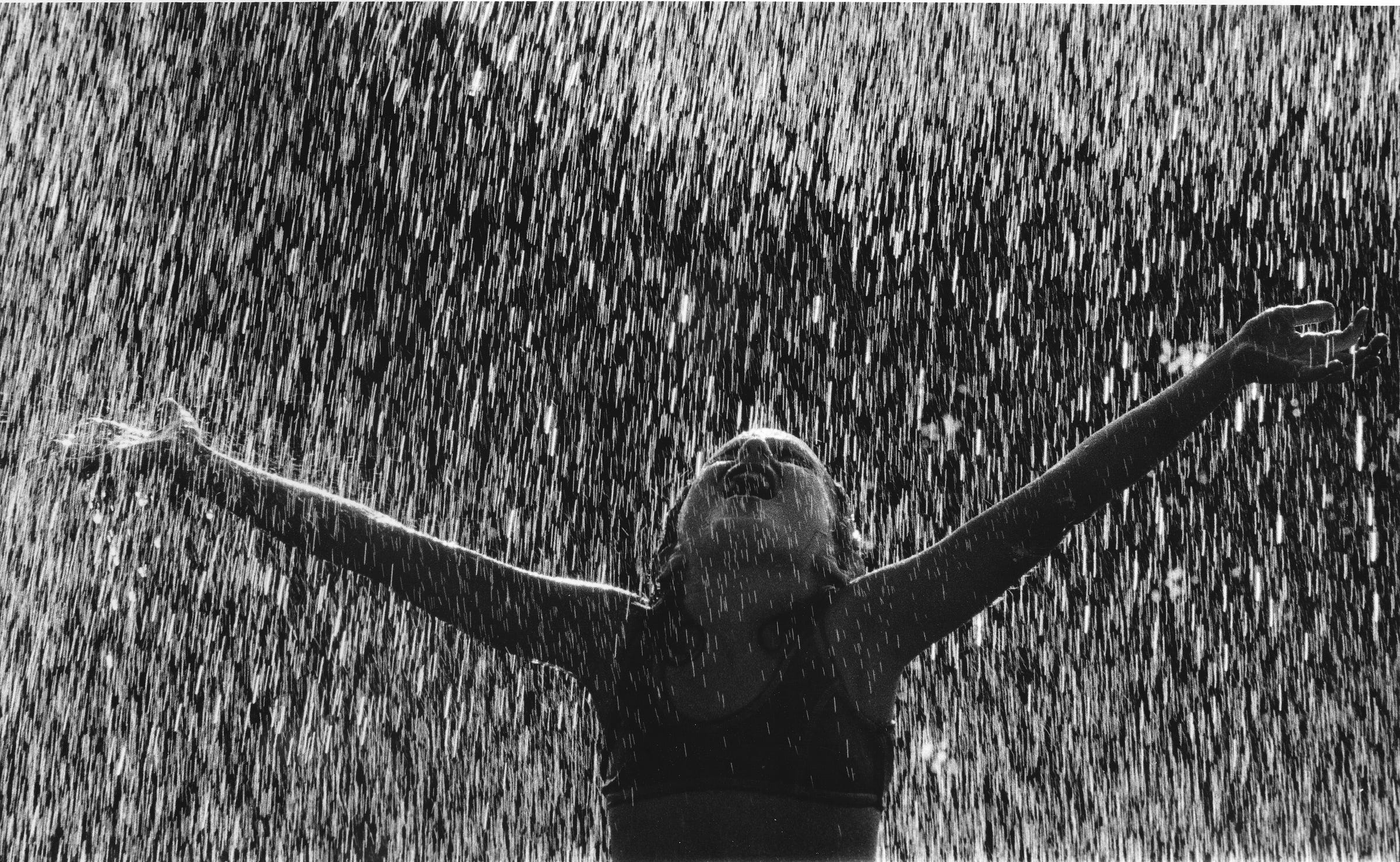Backlight Brings Life To Ordinary
There are moments in photography when the subject, the light, and the emotion align so perfectly that the frame feels alive. The image we're exploring today captures exactly that — a young woman caught mid-motion in a downpour, her arms outstretched, head tilted back, a full-body expression of joy and surrender. It's not just a beautiful moment; it's an exhilarating one, and it’s made even more striking by the way light has been used.
What makes this image resonate isn't just the gesture or the rain; it’s the backlighting. When you position your light source behind your subject, something magical happens. The water becomes visible, almost tangible. This technique doesn’t just light up the rain; it shapes the entire scene. In this photo, the light highlights the subject’s arms and shoulders, making the silhouette stand out against a curtain of water. The drama, contrast, and sense of immediacy all stem from this single lighting choice.
But lighting is only half the equation. The other unsung hero here is shutter speed. The sharpness and definition of the water droplets indicate a relatively fast shutter speed. This effectively freezes the falling rain, turning it into textured lines and creating a feeling of suspended energy.
Now imagine changing that shutter speed. Drop it below 1/500, and the rain begins to blur slightly, creating a softer, more ethereal image. At 1/60 or slower, the rain smears into streaks, and you shift from freeze-frame drama to something more dreamlike or impressionistic. The emotional tone of the image changes entirely. Fast shutter speeds emphasize intensity and motion; slower ones evoke mood and memory. Neither is better — they’re just different tools for telling different stories.
To replicate an image like this, you don’t need a studio or even a storm. A simple sprinkler or garden hose can provide controlled rainfall. The key is to shoot against a dark background so that the lit water stands out. Use a strong directional light — like the low sun during golden hour or a bright spotlight — and position it behind your subject. Set your camera to burst mode, as timing is crucial when water and motion are involved. And don’t worry about perfection. Grain, minor blur, and unpredictability often add character and authenticity.
Ultimately, this photo is more than just a technical success. It reminds us that the simplest elements, light, water, and motion, can become something breathtaking when they intersect in just the right way. It’s a frame full of feeling, and a masterclass in how a photographer can harness light and time to create something both personal and universal.
So the next time it rains, or you find yourself with a hose and a willing subject, remember what’s possible. Get low. Shoot into the light. Experiment with shutter speeds. And let the joy do the rest.
PhotoCamp Daily is not a newsletter about the technical skills required to be a good photographer or become a photojournalist. There is a multitude of videos, self-help books, training courses, and classes, and then there is the power of social media as an instructional tool.
PhotCamp Daily is about learning to experience making good photos. About learning to better observe subjects and their relationship to story. Learning yourself to express better what will become a collective view of your world and the new experiences you will encounter.
PhotoCamp Daily is always free! But you can pledge support at any time.
Consider subscribing to The Westerville News and My Final Photo News. Also recommended is Into the Morning by Krista Steele.
My Final Photo News is a reader-supported publication. To receive new posts and support photography and commentary, consider becoming a free or paid subscriber.


